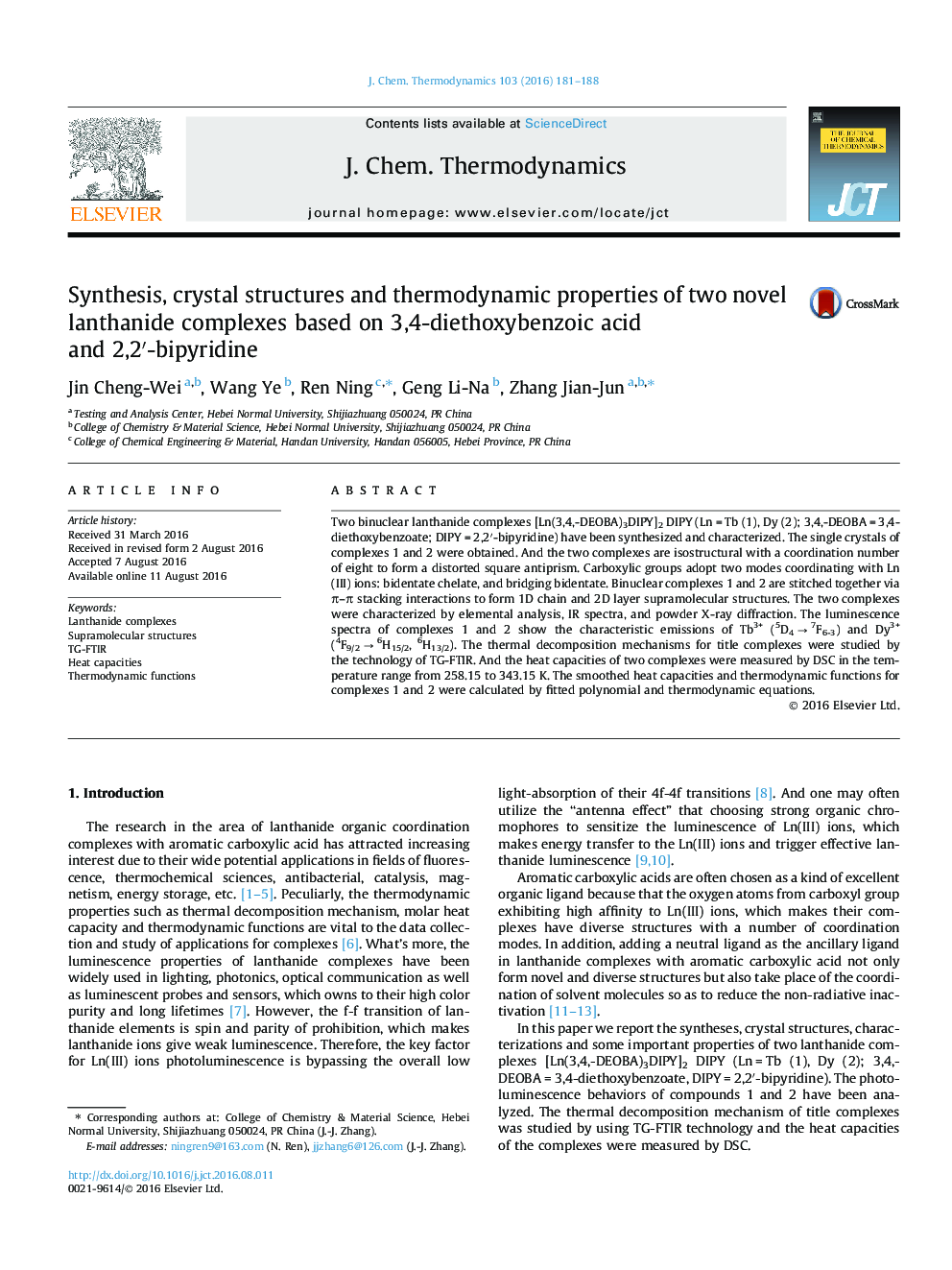| Article ID | Journal | Published Year | Pages | File Type |
|---|---|---|---|---|
| 6476929 | The Journal of Chemical Thermodynamics | 2016 | 8 Pages |
â¢Two novel complexes crystal structures are obtained.â¢The 1-D chain and 2D layer structures were formed via Ï-Ï stacking interactions.â¢The pathway of thermal decomposition for title complexes were investigated.â¢The molar heat capacities and thermodynamic functions were calculated.
Two binuclear lanthanide complexes [Ln(3,4,-DEOBA)3DIPY]2 DIPY (Ln = Tb (1), Dy (2); 3,4,-DEOBA = 3,4-diethoxybenzoate; DIPY = 2,2â²-bipyridine) have been synthesized and characterized. The single crystals of complexes 1 and 2 were obtained. And the two complexes are isostructural with a coordination number of eight to form a distorted square antiprism. Carboxylic groups adopt two modes coordinating with Ln(III) ions: bidentate chelate, and bridging bidentate. Binuclear complexes 1 and 2 are stitched together via Ï-Ï stacking interactions to form 1D chain and 2D layer supramolecular structures. The two complexes were characterized by elemental analysis, IR spectra, and powder X-ray diffraction. The luminescence spectra of complexes 1 and 2 show the characteristic emissions of Tb3+ (5D4 â 7F6-3) and Dy3+ (4F9/2 â 6H15/2, 6H13/2). The thermal decomposition mechanisms for title complexes were studied by the technology of TG-FTIR. And the heat capacities of two complexes were measured by DSC in the temperature range from 258.15 to 343.15 K. The smoothed heat capacities and thermodynamic functions for complexes 1 and 2 were calculated by fitted polynomial and thermodynamic equations.
